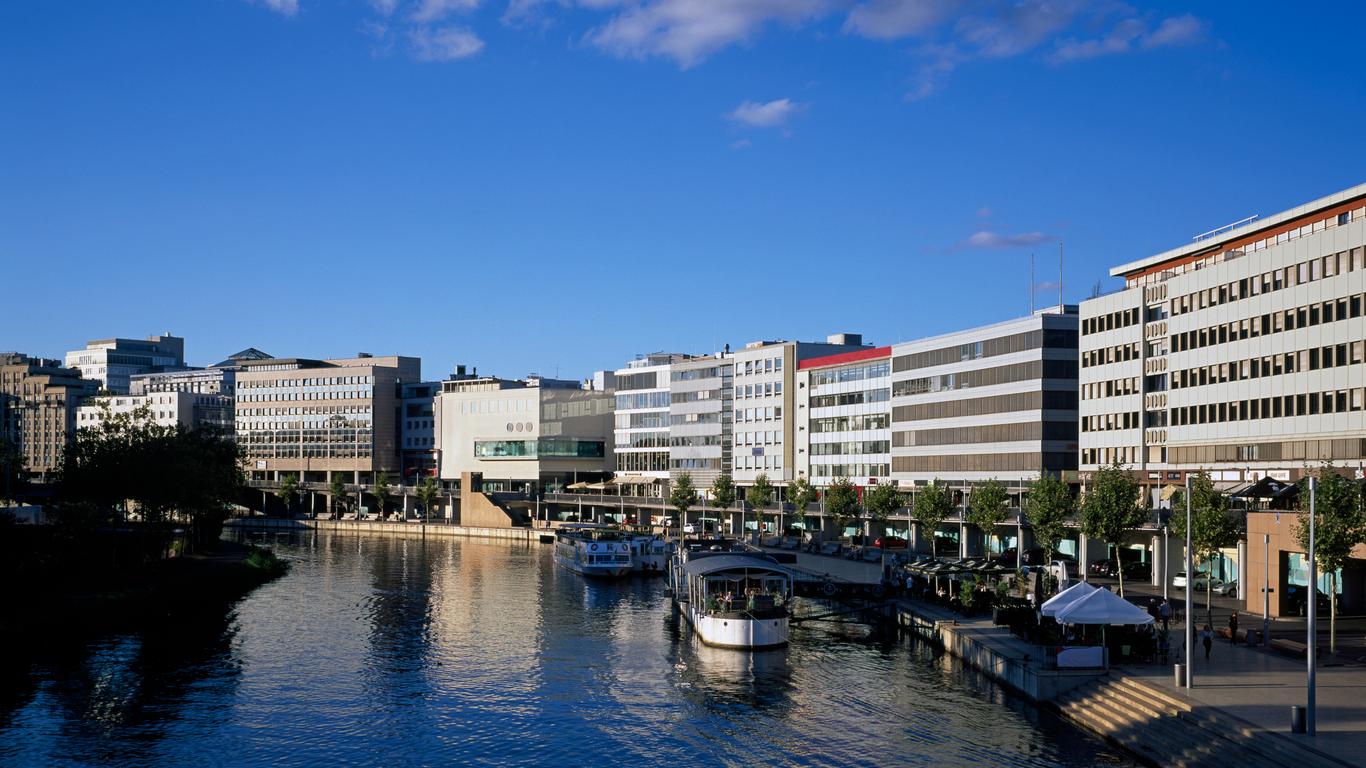Serving as the capital of Saarland, Saarbrücken lies near the French border in Germany’s south-west. It was envisioned as a Baroque city by the 18th-century Prince of Nassau-Saarbrücken, William Henry, and his architect Friedrich Joachim Stengel before becoming an industrial centre for the production of iron and steel.
Things to do in Saarbruecken
One of Saarbrücken’s most beautiful buildings is the Ludwigskirche, which is considered a standout example of German Baroque architecture. While the exterior is magnificently carved with figures of prophets and apostles, the all-white interior features elegant stucco work. The church was designed in the 1760s by Friedrich Joachim Stengel, who was also responsible for Saarbrücken’s Basilica of St. John the Baptist.
Delve into the past at the Saar Historical Museum, which occupies a barrel-roofed building beside the magnificent Saarbrücken Castle. Descend below the Schlossplatz to explore Saar’s medieval history and see artwork by prominent local artists. Also on the Schlossplatz is the Museum for Pre- and Early History where Stone Age artefacts and Roman coins are exhibited.
A short drive east of Saarbrücken is the UNESCO World Heritage-listed Völklingen Ironworks, which was established in 1873 and operated until 1986. It showcases the science behind iron processing with hands-on exhibits and experiments that kids will love. After your visit, follow the six-kilometre-long walking trail that winds through the site, taking in vintage machinery and the old blasting hall.
Getting around Saarbruecken
Saarbrücken Airport is a 15-minute drive from the city centre and has flights to destinations across Europe and North Africa. Trains connect from numerous German towns and cities to the Saarbrücken railway station while both buses and trams travel throughout the city. The centre of Saarbrücken can easily be explored on foot.





